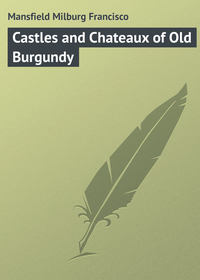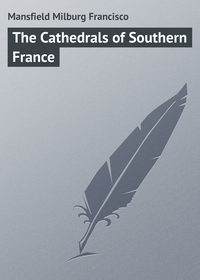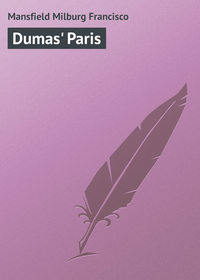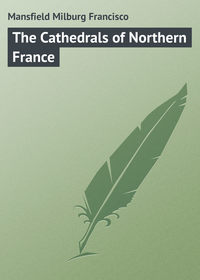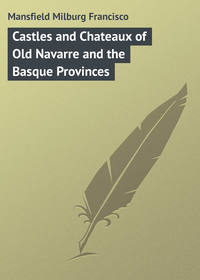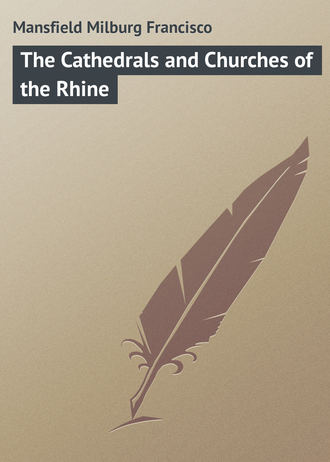 полная версия
полная версияThe Cathedrals and Churches of the Rhine
The façade has been restored in recent years, and is flanked by two pseudo-Romanesque towers or campaniles in the worst of taste.
The interior is divided into three naves by columns bearing rounded arches. Above, in the grand nave, are a series of round-headed windows, while those in the aisles are ogival.
The choir contains a series of Gothic stalls in stone, which, unless it has very recently been scraped off, are covered with the ordinary cheap whitewash.
The painted vaulting is atrocious, and, while its hideous colouring lasts, it matters little whether it is of the Romanesque barrel style or ogival. The nervures are there, so it must belong to the latter variety, but it is all so thickly covered with what looks like enamel paint and gaudy red and blue "lining" that it is painful to contemplate.
There is a fine statue of John Huss supporting the pulpit. It is an adequate monument to one who made history so vivid that it reads almost like legend. In the pavement is a plaque of copper which indicates the spot where Huss stood when his sentence was read out to him. According to tradition – some have said that it was the ecclesiastical law – Huss was hurled from the church by a coup de pied.
The organ-case, of the fifteenth century, which backs up the inside wall of the façade, is one of the most gorgeous of its kind extant, although there is no very high art expression to be discovered in the overpowering mass of mahogany and lead pipes which, with inadequate supports, hangs perilously upon a wall.
This particular organ-case is richly sculptured with foliage and figures of men, demons, and what not. If it is symbolic, it is hard to trace the connection between any religious motive and the actual appearance of this ungainly mass of carved wood.
There is in the cathedral an elaborate allegorical painting by Christopher Storer, a native of Constance, and executed in 1659 by the order of Canon Sigismund Müller, who died in 1686, and whose tomb is placed near by.
An immense retable is placed at the head of the nave. It is of fine marble, and, though a seventeenth-century copy of Renaissance, is far more beautiful than such ornaments usually are outside of Italy.
At the head of the left aisle is a chapel which also has an elaborate marble retable of the same period. At the summit is a crucifix, and below in niches are statues of St. Thomas, of Constantine, and of his mother, Ste. Hélène. In the same chapel is a "Christ in the tomb", in marble, surrounded by the twelve apostles.
From the same aisle ascends a charming ogival staircase ornamented with statues and bas-reliefs. Separating the chapels from the aisles are two magnificent iron grilles. In a Gothic chapel near the entrance is a fine cul de lampe sculptured to represent the history of Adam and Eve.
A cloister exists, in part to-day as it did of yore, to the northeast of the cathedral. It is a highly beautiful example of fifteenth-century work, with its arcades varying from the firm and dignified early Gothic to the more flamboyant style of later years.
The church of St. Stephen is another ecclesiastical treasure of Constance with a rank high among religious shrines.
St. Stephen's occupies the site formerly given to a chapel dedicated to St. Nicholas, while not far away there was, in other times, another known under the name of Maria Unter der Linden. The Bishop Salomon III., who occupied the see from 891 to 919, enlarged the first chapel, which was further embellished in 935 by the Bishop Conrad of Altdorf, who added a choir thereto.
This in time came to be known as St. Stephen's. It was entirely renovated in 1047-51 by the Bishop Theodoric, who was interred therein upon his death. The church served as the meeting-place of the famous Roman tribunal known as the Sacra Rota Romana. Under the Bishop Otto III., who was Margrave of Hochberg, it was entirely reconstructed in 1428, and to-day it is this fifteenth-century building that one sees. Previously, if the records tell truly, the great windows of the clerestory contained coloured glass of much beauty, but the remains of to-day are so fragmentary as to only suggest this.
From 1522 to 1548 St. Stephen's was consecrated to the followers of Luther, the first incumbent under this belief being the famous Jacob Windner of Reutlingen.
The exterior of St. Stephen's is not in any way remarkable. The bell-tower, which is very high, is a great square tower to the left of the choir, surmounted by a steeple formerly covered with wooden shingles, but in recent times coppered. The clock in this tower was the gift of Bishop Otto III. There is also a fine chime of bells, which will remind one of the churches of the Low Countries when he hears its limpid notes ring out upon the still air.
The interior has been newly whitened with that peculiar local brand of whitewash, and while bright and cheerful to contemplate, is also very bare, caused perhaps by the vast size of the nave and choir.
The aisles are separated from the nave by ogival arches, rising from a series of octagonal pillars, upon which are hung statues of the twelve apostles. The wooden roof of the nave and its aisles is curious and dates from 1600, but it is mostly hidden by a plaster covering which was added in the early nineteenth century.
The gilded and highly decorated organ and its case dates from 1583. In 1819 and 1839 it was "restored," whatever that may mean with regard to an organ, and at some time between the two dates were added two colossal figures of David and St. Cecilia. There are numerous and elaborate paintings in St. Stephen's which would make many more popular shrines famous. The most notable are "St. John before King Wenceslas," "The Stoning of St. Stephen," "The Glory of the Lamb," and an "Adoration," the work of Philip Memberger, who painted this last at the time of the reëstablishment of the Catholic faith at Constance in 1550. A portrait of the artist is preserved in the sacristy.
Many other works of art were demolished or carried away in the years of the Reformation.
In 1414 three Popes disputed the honour of occupying the Holy See, John XXIII., Gregory XII., and Benoit XIII. The Emperor Sigismund, after having met the deputies of each of the aspirants at Como and Lodi, assembled a council to put an end, if possible, to the anarchy which had arisen within the Church. Its place of meeting was Constance, and the emperors, kings, princes, cities, churches, and universities of Germany, Sweden, Denmark, Hungary, Bohemia, and Italy all sent their deputations. France was represented by Pierre d'Ailly, Archbishop of Cambrai, and Jean Gerson, the chancellor of the University of Paris.
The Council of Constance was the most numerous body which had ever been called together on behalf of the Church. It opened its sessions on the 5th of November, 1414, and continued until the 12th of April, 1418.
John XXIII. declared that he would abdicate if his two competitors would agree to follow his example. Gregory XII. agreed to this and sent his abdication to the council by an ambassador, Carlo Malatesta; but Benoit XIII. fled to Spain and still clung tenaciously to the title of Pope. Finally, at a conclave composed of thirty-two cardinals, Othon Colonna was, in 1417, elected Pope under the name of Martin V.
The council held at Constance which condemned John Huss, who was a Wyclif disciple before he was one of Luther's, took place in 1414. Huss was condemned to be burned alive in 1415, and "he mounted the pile," says history, "with the courage of a martyr."
One may see in the Place Brühl, a kilometre from the centre of Constance, the very spot where the "pile" was erected.
The present customs warehouse (Kaufhaus) formed Constance's famous council-chamber, and to-day it is one of the most interesting curiosities of the city.
The grand council-chamber is situated on the first floor of the building, and was erected in 1388. Its length approximates two hundred feet, and it is perhaps one hundred in width with a height of twenty feet.
The ceiling is held aloft by fourteen wooden pillars, and there are twenty-three windows.
There are no traces of wall decorations, and the opinion is hazarded that the walls and pillars were, at the time of the council, hung with draperies.
From the windows there is a fine view of the Lake of Constance, and but a little distance away is the Franciscan convent, now transformed into a factory, where was incarcerated John Huss previous to his martyrdom.
SchaffhausenOf the falls of Schaffhausen, Victor Hugo wrote: "Effroyable tumulte." This is the first impression. The four grand, overflowing channels of the cataract tumble, rise and redescend in an eternal tempest of rage.
A musical German once said that the only way to express the tumult of Schaffhausen's fall was to "put it to music." He probably had Wagner in mind, and perhaps there are persons who could conjure up a picture of its foam-decked course by means of the master's harmonies.
Montaigne was of a more practical turn of mind. He said: "Cela arrête le cours des bateaux et interrompt la navigation de ladite rivière."
Compared with Niagara, Victoria Nyanza, or the great cataract at Yosemite, the falls of Schaffhausen depict no great splendour of aspect, though they are tumultuous and unqualifiedly picturesque. Furthermore, they form a pretty setting for the little city of some five thousand souls which bears the same name.
With Basel, Schaffhausen has preserved its mediæval character far more than the other cities of Switzerland. Its streets are narrow and irregular, and most of its houses are of the deep-gabled variety, many of them having their fronts frescoed in truly theatrical fashion, the effect, as might be supposed, being highly pleasing.
Schaffhausen owes its prominence in the commercial world to its falls, which make it necessary for merchandise making its way between Constance and the Lower Rhine to be transshipped at this point. The traffic is by no means so large as that which goes on in the Lower Rhine, but it does exist in proportions so considerable as to justify a certain activity in this old-world town which is noticeable to-day, and which has existed for many centuries. The name Schaffhausen (Schiffhausen) comes, it is claimed, from the houses of the boatmen, and this seems sufficiently plausible to be accepted without question.
The Fortress of Munoth dominates the city, crowning the height of Mont Emmers. It occupies the site of an ancient Roman stronghold, and, like its fellows which crown the heights bordering upon the German Rhine, is formidable in its grimness if not for its actual value in modern warfare.
In 1052, Count Eberhardt of Nellenburg founded an abbey here, and accorded to the abbot rights and powers without limitation, so far as the count's seigneurial lands were concerned. To-day, however, Schaffhausen is not rich in ecclesiastical monuments. Its cathedral is a Byzantine edifice of the twelfth century, and is a development from the church of the ancient abbey founded by Count Eberhardt.
There are no constructive or decorative details which call for remark, save twelve columns, each cut from a solid block of sandstone. They measure perhaps twenty feet in height, and are three feet or more in circumference.
There is no resemblance between the architecture of this church and others in the Rhine valley; therefore it cannot be considered as typical of any Rhenish manner of building.
St. John's is an ogival edifice also without any great merit, unless it be that of a grandeur which is contrastingly out of place in its cramped surroundings.
Below Schaffhausen is Sackingen, the third forest city of the Rhine. It owes its origin to a convent of St. Hilaire, founded in the sixth century by St. Fridolin.
The "Lives of the Saints" recounts how St. Columba and his disciples left Ireland and came to Constance, where they separated and went their various ways to evangelize the Rhine valley. To St. Fridolin fell that part lying between Basel and Laufenburg. His bones are yet venerated in the church of St. Hilaire.
VII
BASEL AND COLMAR
BaselAfter traversing several of the Swiss cantons, the Rhine leaves Switzerland at Basel. After the breaking up of the vast empire of Charlemagne, Basel came first under the authority of the Emperors of Germany, and then under that of the kings of the second house of Burgundy, until 1032, at which time the city became definitely incorporated into the German Empire.
Rudolph of Hapsburg besieged the city in 1274, and through the fourteenth and well into the fifteenth century it was the theatre of many struggles between the bishops and the emperors.
In 1061 and 1431 important councils of the Church were held here.
In 1489, at the village of Dornach, scarce half a dozen miles from Basel, took place that battle between six thousand Swiss and fifteen thousand Austrians which made possible the future independence of Switzerland.
During the sixteenth century Basel enjoyed a glorious era with respect to science and art.
Its university, the oldest in Switzerland, founded by Pius II., shone brilliantly with the reflected light of the philosopher Erasmus, the alchemist Paracelsus, and many theologians and geographers. Hans Holbein was born here in the seventeenth century.
The Rhine divides the city into two unequal parts, which are connected by a bridge which was originally constructed in 1220.
Although Basel bears even yet, in its architecture, the stamp of an imperial city of the middle ages, it must be counted as somewhat modern. Nevertheless, of all the cities of the first rank in Switzerland it resisted the march of innovation the longest. For instance, there was a time when all the clocks of the city were an hour behind those of their neighbours. In 1778, however, the Swiss government decreed that on the first of the following January all the clocks of the city must be regulated by solar time. The innovation excited the indignation of the people exceedingly; but, fifteen days after the date originally set, the city fell in with the new regulation, and took up anew the routine of its life.
"The most magnificent of the Swiss women," says a gallant French writer, "are those of Basel, but they know too much (at all times and all places)," he continued, somewhat dulling the effect of his praises.
"They have an elegance of carriage and dress, which, added to their naturally agreeable qualities, gives them a preëminence over all other women of Switzerland."
All this is as flowery a compliment as the fair sex of any country could receive, and, judging from appearances, as one lingers a few hours or a few days in Basel, it is all true.
The most remarkable of all the edifices of Basel is its cathedral, or münster, dedicated to the Virgin.
In certain of its features one finds a distinct Lombard influence, – in its sculptures and carvings, notably the two carved lions in the crypt, which are the counterparts of others at Modena and Verona in Italy, – though in general it is a Gothic structure.
The cathedral was founded by the Emperor Henry II. of Bavaria in 1010, and was dedicated in 1019.
It is constructed of red sandstone, as are the chief of the architectural monuments along the Rhine, and is an imposing example of the Gothic of that time.
The great portal on the west is richly decorated in the archivolt. It is flanked on either side by an arcade whose buttress pillars are each surmounted by a statue in a canopied niche or baldaquin.
At the foot of the north tower is an equestrian statue of St. George and the Dragon, and at the angle of the southern tower is another of St. Martin.
Two small doorways, each entering the side aisles, flank the arcade of the portal. Above the principal doorway of this façade is a balcon à jour before the great window which lights the main nave.
The towers rise beside this great window, and are of themselves perhaps the most remarkable features of the church.
They are not exactly alike, but they reflect more than any other part of the edifice the characteristics of the Gothic of these parts. The northern tower was completed in 1500, and is sixty-six metres in height. The southern tower is perhaps more ornate, and resembles, if somewhat faintly, Texier's beautiful spire at Chartres.
The ogival windows of the side walls are strong and of ample proportions.
At the extremity of the north transept is a doorway known as the Porte de St. Gall, decorated with statues of the four evangelists. Above is a great round window of the variety so commonly seen in France. It is here known as the "Wheel of Fortune." It is not a particularly graceful design, the rays or spokes being formed of tiny colonnettes, but is interesting nevertheless and quite unusual along the Rhine.
The coping of the roof of the nave is formed of party-coloured tiles, which give it a singular bizarre effect when viewed from near by.
The interior divides itself in the conventional manner into three naves, which are bare and with no ornamentation whatever.
The pulpit is a real work of art, and there are some sculptured capitals in the choir which are quite excellent.
The baptismal fonts are elaborately carved. One of these, bearing the date of 1465, is shaped something like a gigantic egg-cup. Its bowl springs from the stem in eight facets, sculptured to illustrate the baptism of Christ in the waters of the Jordan, with figures of St. Lawrence, St. Jacques, St. Paul, St. Pierre, and St. Martin.
Holbein once made a series of decorations for the organ-case of this church, but they exist no longer.
Beneath the edifice, with its entrance from the choir, is a crypt nearly as large as the nave itself, with a series of massive pillars supporting its vault and the pavement of the church proper.
There are numerous monuments within the church, including one to Erasmus, the illustrious Hollander who had made Basel his second home.
A stairway leads from the church to the chamber where was held, from 1431 to 1444, the famous Council of Basel. It is a vast, bare room, with no furniture whatever, except the benches upon which sat the prelates assembled at the council.
The cloister attached to the cathedral is daintily planned and contains a number of tombs of celebrated persons.
Behind the church is a magnificent terrace known as the Pfalz. It is planted with chestnut-trees, and its elevation, high above the level of the Rhine waters, makes it a magnificent promenade.
The Hôtel of the Three Kings – though it is to-day a modern structure that one sees – was, in the ninth century, the meeting-place of Conrad III., Henry III., and Rudolph III., the last King of Burgundy. Following another tradition, the house derived its nomenclature from the reliques of "the Three Magi," which were lodged here when on their journey, in 1161, from Milan to Cologne.
In the museum at Basel are two of Holbein's, sketches made from statues in the Sainte Chapelle at Bourges in France. They represent the Duke Jean de Berry and his wife, Jeanne de Boulogne. It seems rather curious that a great draughtsman like Holbein should deliberately have set himself to copying from a cast, which is practically what it amounted to in this case, charming though these drawings be.
ColmarColmar, the chief town of the "circle of Colmar," was once strongly fortified. It still has something more than fragments left of its seven towered and turreted gates.
Formerly it was the capital of Upper Alsace, and later it was the capital of the Département du Haut-Rhin. As a result of the war of 1871 it became a German city.
To Americans and Frenchmen it will perhaps be most revered as being the birthplace of Auguste Bartholdi, the designer of the celebrated Statue of Liberty at New York. (There is a smaller counterpart at Paris, on the Ile des Cygnes in the Seine, which is often overlooked by visitors to the capital.)
The church of St. Martin is a thirteenth-century Gothic church of more than usual splendour. Its fine foundations date from 1237, and its choir from 1315. It is of the conventional Latin cross form, with two imposing towers and a really grand portal. It is built of red sandstone, and is surmounted with a wonderfully massive steeple, which looks more like an adjunct to a fortification than a dependency of a Christian edifice. There is a counterpart of this feature in the cathedral at Dol in Brittany, but there it has the added detail of a crenelated parapet, which gives it a still more military air.
In other days this great tower on St. Martin's at Colmar served the purposes of a civic belfry as well as that of a Christian campanile.
In the sacristy of this rather grim church is an admirable fifteenth-century work of art, a Virgin surrounded by garlands of roses, executed by Schöngauer, a native of Colmar (1450-88) and one of the greatest painters and sculptors of the fifteenth century.
There is the restored fabric of the famous convent of the Dominicans, known as Unterlinden, which is to be considered as one of the chief curiosities of the town. It was built in 1232, before even the church of St. Martin, and its history was exceedingly prominent in the records of mysticism in Germany.
The conventual establishment was suppressed at the time of the Revolution, but in the mid-nineteenth century it was rebuilt with a great deal of thought for the reproduction of the Gothic architecture of the era of its inception.
VIII
FREIBURG
The steeple of Freiburg is quite the rival of that of Strasburg; some even may think it more beautiful.
It has braved with impunity the winds and tempests of many centuries, and stands to-day as beautiful a work of its kind, when one is away from Strasburg, Chartres, Antwerp, or Malines, as one can well conceive.
Its appearance is indeed magnificent, with a richness of ornament which has not been carried to the excess that would make it tawdry, and an outline which in every proportion is just and true.
Each day brings new admirers to this shrine, and one and all, antiquarians and cursory travellers alike, go away with an enthusiastic regard for its charms.
Freiburg itself does not go very far back into antiquity. It owes its origin to Berthold III., Duke of Zähringen, who founded it in 1118 and made it the capital of Breisgau, one of the most fertile districts of the ancient German duchy.
The cathedral at Freiburg marks the opening of a new era in the Christian architecture of Germany. It was founded in 1122 by the Duke of Zähringen, soon after he took over the guardianship of the city, but it was only in 1513 that it was entirely completed.
Nothing now remains of the primitive church except the transept and the base of the lateral portals. The nave dates from the middle of the thirteenth century, and the choir was mostly rebuilt at the same time. The dedication did not take place until a century and a half later.
The structure is in the conventional form of a Latin cross, with the usual nave and aisles and a series of chapels surrounding the apside.
The façade is remarkable for the porch, which is highly ornamented with sculpture and forms the lowest story of the tower.
The pediment above the entrance is garnished with statuary representing the crowning of the Holy Virgin, while just below, at the sides, are two kneeling figures, with crowns on their heads, bent in prayer.
Besides this gallery of saintly figures, there are also sculptured symbols which, in such a company, might well be thought profane: figures representing Geometry, Music, Arithmetic, and the Arts.
In the tower, above the porch, is a chapel dedicated to St. Michael, lighted by three ogival windows. It is now a bare, uninteresting chamber, its altar and decorations having disappeared.
The third story of the tower forms the belfry, from which springs the gently tapering and beautiful spire which rises to a height only forty feet less than that of Strasburg.
The dwindling spire has a dozen facets which in some mysterious way unite with the octagon of the belfry in a manner that leaves nothing to criticize.
Within the cathedral there are some acceptable mural decorations in the wall space above the western arch of the transept crossing. There are also a number of funeral monuments, finely sculptured and quite remarkable of their kind. One, a "Christ in the Sepulchre," is admirably executed in the sixteenth-century style of Koempf, who is responsible also for the elaborate pulpit.




